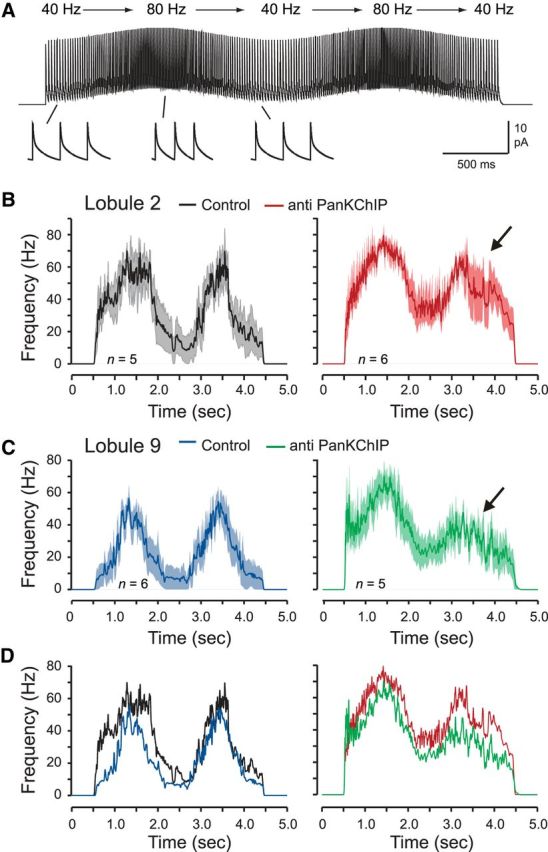Figure 8.

Granule cells in lobule 9 have greater frequency-following capability for EPSCs delivered in a pattern simulating vestibular-like input. A, Example of the train of MF simEPSCs evoked by postsynaptic injection with a pattern shifting in an oscillatory manner between 40 and 80 Hz. Single EPSCs are shown expanded at the bottom. B–D, Average spike-frequency plots over time of lobule 2 and 9 granule cells in response to the input shown in A, with responses superimposed in D. Left, Lobule 9 granule cells respond in a more graded manner and can better follow oscillatory simEPSC inputs compared with lobule 2 cells. Right, Dialyzing anti-PanKChIP (1:100 dilution) in the electrode to block the Cav3–Kv4 interaction converts the response of lobule 9 cells (C) to one closely resembling lobule 2 cells (B). Shaded areas in B and C reflect SEM.
